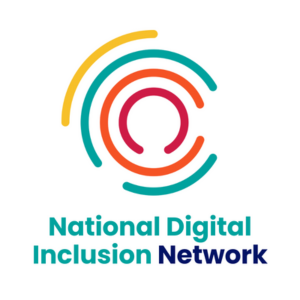Insights
INSIGHTS
All Topics
My Account
How charities can meet the new digital accessibility standards
20 Jun 2019by Former Member
Charities are legally responsible for meeting accessibility standards online, but most don’t. Digital accessibility expert Carlos Eriksson of Studio 24 explains what they can do to fix it, starting now
Carlos Eriksson is Accessibility Lead Developer at Studio 24. Eriksson was named ’Champion of Change’ in the 2019 BIMA 100 which recognises the top 100 digital movers and shakers, thanks to his decade-long work making the web better for everyone.
In the past couple of years, accessibility has gone from being an afterthought at best, to an often spoken about subject at conferences and water coolers alike. Inclusive design is now close to joining buzzwords like blockchain, machine learning and big data. But it’s not without its merit.
Building on the Equality Act 2010, new regulations (Sept. 2018) give the government more leverage and power to enforce legal compliance for public sector bodies such as central government, local governments, charities and other non-government organisations.
The deadlines for the new regulations vary depending on existing or new websites but the end goal is the same. Your website or digital product must be fully accessible and meet the WCAG 2.1 AA standard by being "perceivable, operable, understandable and robust". This includes any PDFs which are essential to the services your organisation provides.
If you haven’t already, I recommend you start making a plan to meet accessibility standards, as you’re legally responsible for your website, even if you’ve outsourced it to a supplier. But with this, the web landscape is looking a lot better, isn’t it? We’ve really taken a step forward. Except, it’s not. And whilst we’ve definitely taken a step forward, we’ve also taken one back.
In reality, many people can’t see your website or digital product at all. The latest figures from the World Health Organisation (WHO) show that 1 in 6 people worldwide has some form of vision impairment, one of the many different forms of disabilities.
At 1.3 billion people, that’s almost twenty times the entire population of the United Kingdom. From tunnel vision and diabetic retinopathy to cataracts and presbyopia, you probably know more than a few people who struggle to read fine print and text with low contrast. And you are only an injury, illness or the effects of ageing away from joining them.
First steps to accountability
A recent accessibility analysis of the top 1,000,000 home pages conducted by WebAIM, one of the leading providers of web accessibility expertise internationally, concluded that the number one problem with websites is a lack of contrast.
More than 85% of websites and digital products fail to meet contrast requirements. As a result, they don’t work for people, they work against them by creating a mismatch between technology and the people they are meant to serve. And whilst automated tools can only catch 30% of all accessibility issues, colour contrast is one of the easiest issues to test and fix.
With a staggering number of free tools available online you have no excuse to carry on excluding people with low vision.
Having a plan and the right tools is one thing, what’s left? Here’s the cold, harsh reality. Until accessibility and inclusion become a business goal with KPIs - because it damn well better be - you’re never going to fix it. Inclusion cannot be a checklist ticking exercise added on at the end of the project.
Instead, it needs to be an explicit and formalised intention which can be measured and followed through, from start to finish.
It has to be a systemic choice which is reflected throughout your business operations where the team members delivering solutions are held accountable for all the people their choices exclude. Because only then can you say that, “Yes, we meet the WCAG 2.1 AA standards.” Only then can you take two steps forward.
More on this topic
Recommended Products
Recommended Products
Featured Products
Our Events
Charity Digital Academy
Our courses aim, in just three hours, to enhance soft skills and hard skills, boost your knowledge of finance and artificial intelligence, and supercharge your digital capabilities. Check out some of the incredible options by clicking here.














